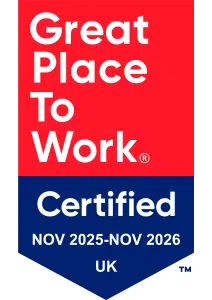Don’t just survey employees – act in their best interest

It forms the foundation of employee engagement and all positive relationships in your organisation. But trust is fragile. You can spend years building it only to see it vanish when senior leaders ignore employee feedback. And if you’re using more time sending out surveys than you are on actioning the feedback, it’ll disappear double time.
Neglecting survey results is a proven way to disengage people, and that damage isn't easily fixed.
We all agree businesses should listen to employees, but unfortunately, most stop at listening. It's a good start, but not enough. Organisations need to act on the insights and commit to meaningful changes and continuous improvement, creating more of a journey than a one-off event. That’s what creates genuine connection with your employee value proposition, as employees can see how their input can shape the business they’re part of.
Turning your survey results into 'Action'
The main challenge underpinning employee surveys is following through on the outcomes. Most organisations do a pretty fantastic job with conducting surveys – sticking to the design principles, communicating its important, and getting high levels of employee engagement – but the problems start when the results come in.
Some organisations survey so frequently they don't have time to act on key insights. Others lack the skills, willingness, or commitment to turn feedback into action. And sometimes it’s unclear what actions need to be taken. But if one thing is for sure, taking no action will survey leave those who participated feeling ignored.
So, how can your HR function ensure results lead to action throughout the organisation? As with most things, it starts with a clear process and planning approach. This means you can take survey results, distil the employee insights, and then figure out how to practically implement the steps to remedy any issues.
The steps that turn surveys into success:
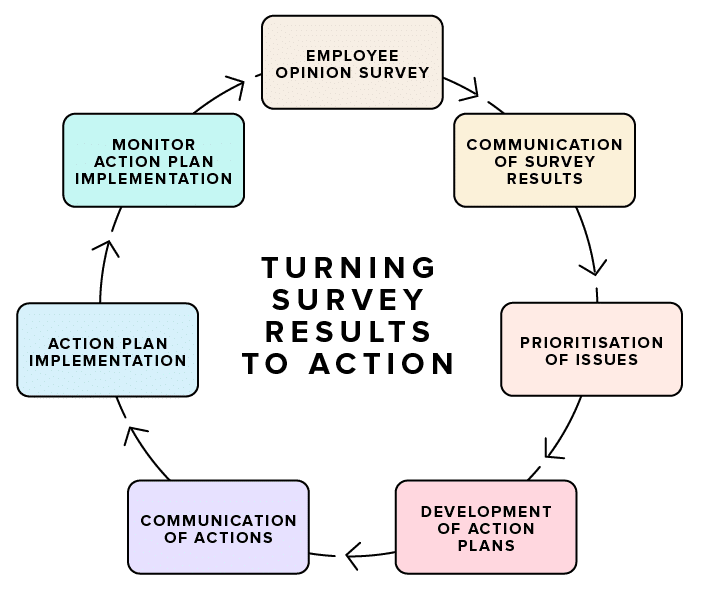
STEP 1 – Communicate your survey results
What’s crucial is that, after your survey closes, you take the time to study the results and share the information with people. Not doing so will make your people feel like they’ve wasted their time participating, which can make it harder to get them to complete future surveys or consult with them on how they want to see things dealt with.
It all starts with engaging your executive team. Make sure your senior leadership are invested and involved early in the change process with a full understanding of employee engagement benefits. Keep the numbers handy to convey the financial implication of a poor employee experience, and emphasise how improving it will empower your employee value proposition to work harder.
Once you’ve examined the results with your senior leadership and know the key points to raise, it’s best to communicate these clearly within two weeks of your survey coming to a close. Always thank them for taking part and reinforcing the importance of the role, before sharing the facts and figures along with next steps. The longer you take to share this information, the more they might expect in terms of solutions and the greater the risk of losing trust in you as an employer brand.
STEP 2 – Prioritising the issues
You’ve given people the immediate information from your survey, now it’s time to drill down into the issues raised. Work with your executive team to identify the most important areas – the ones that could cause the biggest disruption or concern for your business goals.
Aim to commit to two or three areas maximum. Overstretching by trying to tackle every issue your survey uncovers can result in shallow actions with minimal results. Instead, focus your improvement efforts where they’ll have the most positive impact.
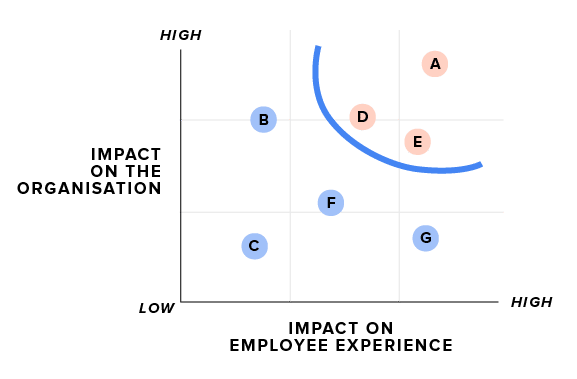
While your survey may reveal symptoms, you’ll need to go deeper to evaluate the root causes you need to address. Review both numbers and employee comments to help diagnose performance issues using the ‘Five Whys’ - repeatedly asking ‘why’ to thoroughly interrogate something and get to the heart of what needs resolving.
With your three priorities decided upon, you can then communicate these to your employees to help your whole organisation move forward as one. You don’t necessarily need to lock in your actions at this point either – as raising your priorities at this stage allows you to monitor sentiment and keep employees involved within the process.
STEP 3 – Developing an action plan
Now everyone better understands the issues, it’s time to start developing some concrete actions. You may already have some ideas floating around, but all stakeholders need to collaborate and coordinate in order to make any actions as effective as possible. There are three straightforward questions you can run through to get there.
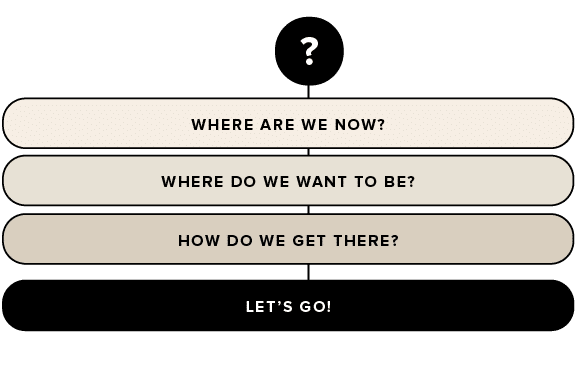
The first two help establish your current reality, informed by your survey, as well as where your organisation would ideally want to be. This then helps you map out the journey you need to take – your actions – which can be more targeted for effective results. When thinking up possible actions with stakeholders, record all the ideas you have - don't worry if some seem unrealistic, as its better to throw out everything and then refine them down. These could be:
- Supporting existing actions with greater investment
- Re-prioritising planned actions to match the biggest issues uncovered
- Developing new actions from scratch
By taking your actions and aligning them with your priorities, you can create a clear plan. You’ll want to establish a realistic timeline, clear role and responsibilities for who will handle which elements, and SMART objectives to measure ongoing progress. These should like in with your overall business objectives, rather than any survey metrics. You can then consult with employee and line managers to get wider buy-in, making sure people feel that everything being suggested feels realistic and actionable.
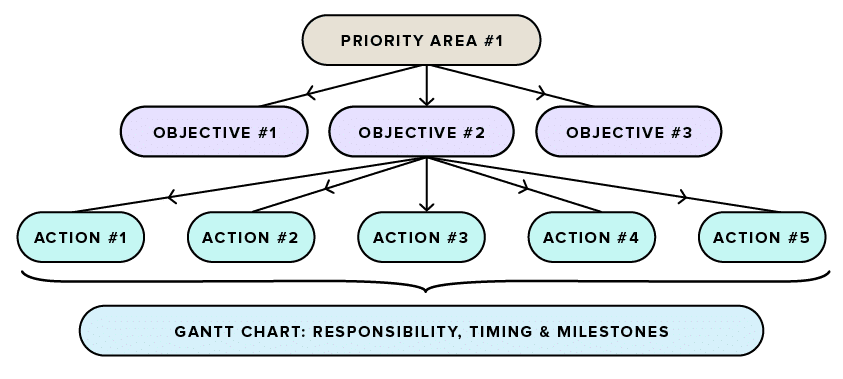
STEP 4 – Communication of actions
This is the difference-maker when it comes to employee surveys. Communication should be continuous, ramping up and down around each survey, but keeping employees in the loop. Employees need to see their feedback is taken seriously by senior leadership – especially when it comes to how you’re going to address the precious feedback you’ve been given.
Show employees why those particular actions are necessary and the need for change. They’ll likely want to know what's in it for them – which usually translates to some element of your employee value proposition. Communicate how the proposed actions will improve their work experience and organisational productivity, as well as how it all ladders up to the big picture.
This boosts employee engagement with the wider change process, especially if you can then facilitate with the tools, training and support needed to make any change a success. That way, employees can understand how their individual actions are part of a collective force – one that’ll create a better world of work for everyone involved.
STEP 5 – Implementing your action plan
Having an ambitious, high-level action plan is fantastic for focusing people – but breaking it down into smaller tangible steps helps people to really make it part of their day-to-day activities. Each priority action should aim to hit one or more business objectives, powered by smaller actions and behaviours that contribute to its success. The plan needs to answer:
- What needs to be done? Communicate priority actions, objectives and sub-actions
- Who will do it? Identify responsible individuals, build responsibility into personal objectives
- When will it be done? Evaluate timings to see payoff, with a focus on explaining quick wins, urgent issues, and longer-term strategic issues
- Which resources will be required? Detail budget/investment to support the plan, staff reallocation, and any external help
- How will success be measured? Intermediate milestones, qualitative and quantitative measures
Because successful implementation depends on organisation-wide action, it is well worth appointing a number of change leaders to assist with each priority area. Senior leadership can identify one change leader per priority area, who can then form a close-knit team pulling form different departments to help bed in the action plan. This can include sharing best practice, keeping employees and leadership updated on how things are going, and being a first point of contact for any questions.
Smaller organisations of 50 employees or less could have one change leader overseeing all priorities, but the larger an organisation is in scale, the more people you may need to appointment. Larger organisations of 500+ may need cross-functional task forces to make each priority a success. A Gantt chart can help track everything from project activities, deadlines, milestones, and responsible persons to keep your action plan on track.
STEP 6 – Monitor the effectiveness of your action plan
No action plan is complete without measuring results. Although your plan is looking to address the latest survey, it’s still just another stop on your improvement journey. By monitoring that forward progress, you can course-correct if things aren’t panning out and celebrate wins as you continue.
Set clear milestones from the get-go which you can regularly update your organisation on, sharing goals publicly to help show accountability and maintain momentum. These four basic measures can determine the consistency of communication and action planning:
- Percentage of employees who learned about survey results
- Number of actions developed
- Degree of action implementation (number of actions started)
- Percentage of actions fully completed
By tracking and reporting on these measures quarterly, you can display measurable results that can be played back to senior leaders and employees – with the later being more likely to support changes if they feel involved and can see how it’s improving their work environment.
The biggest question at the end of this though, is have your actions led to improved employee experience and morale? Your next survey is the ideal opportunity to evaluate the effects of your investments. If you establish the employee survey as a reliable communication tool, you’re more likely to generate employee engagement and trust.
Some final thoughts
Turning employee feedback into positive change is challenging. It takes time and commitment, but the potential benefits are worth the effort. My main advice is don’t try to do too much - keep things simple:
- Communicate high-level results right away
- Focus on no more than three priority areas
- Connect those priorities to other key business objectives
- Don't overcomplicate the action planning process
- Create tangible actions and behaviours for each priority (consider champions or task forces)
- Regularly communicate progress and remind people of achievements
It's crucial to follow through on promises after a survey to show your commitment to improvement and employee value proposition as a whole. It shows you value employee feedback, that people are being heard, and want to empower to participate in the change process. Because businesses that don’t change for the better often stagnate and fall behind.
What’s crucial is that after your survey closes, you take the time to study the results and share the information with people. That way, you can consult with employees about where they feel the priority areas are and how they’d like to see changes made, so you can address both within your plan. You’ll also want to monitor progress being made so you can communicate improvements, providing employees with evidence that their thoughts and feelings are making a difference.
